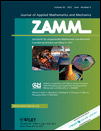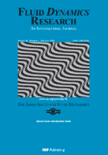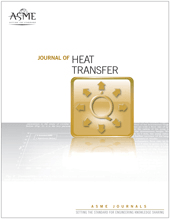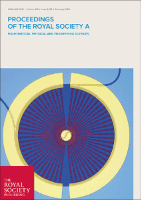
ZAMM-Zeitschrift fur Angewandte Mathematik und Mechanik
Scope & Guideline
Pioneering Insights in Mathematical Applications for Engineering.
Introduction
Aims and Scopes
- Applied Mathematics in Fluid Mechanics:
The journal publishes research that applies mathematical techniques to analyze fluid flow, including non-Newtonian fluids, magnetohydrodynamic (MHD) flows, and nanofluids. - Thermal Analysis and Heat Transfer:
It covers studies focused on heat transfer phenomena, including thermal radiation, Joule heating, and heat generation in various fluid models. - Mathematical Modeling of Materials:
Research on the mechanical properties of materials, including functionally graded materials, composites, and nanocomposites, is a key focus area. - Numerical Methods and Simulations:
The journal emphasizes advanced numerical techniques for solving complex differential equations related to fluid dynamics and material behavior. - Interdisciplinary Applications:
ZAMM explores applications across various fields such as biomedical engineering, materials science, and energy systems, promoting interdisciplinary research.
Trending and Emerging
- Nanofluid Research:
Studies on nanofluids are increasingly prominent, exploring their thermal and flow characteristics, which are critical for applications in cooling systems and energy efficiency. - Multiphase Flow Dynamics:
Research focusing on multiphase flows, including bio-convective flows and interactions between different fluid phases, is emerging as a significant area of interest. - Machine Learning Applications:
The integration of machine learning techniques into fluid dynamics and mechanical analysis is on the rise, indicating a trend towards data-driven approaches in solving complex problems. - Bioengineering Applications:
Research that applies mathematical modeling to biological processes, such as blood flow and drug delivery systems, is increasingly represented in the journal. - Thermal Radiation and Heat Transfer Optimization:
There is a growing emphasis on optimizing heat transfer processes, particularly in the context of renewable energy and advanced material applications.
Declining or Waning
- Classical Fluid Dynamics:
Traditional studies in classical fluid dynamics are becoming less common, as the focus shifts towards more complex fluid models, such as nanofluids and non-Newtonian fluids. - Static Structural Analysis:
There is a noticeable decline in papers focused solely on static analysis of structures, as the journal trends towards dynamic and time-dependent analyses. - Simplistic Mathematical Models:
Research employing overly simplified models without considering real-world complexities is decreasing, with a preference for more sophisticated and realistic modeling approaches.
Similar Journals

International Journal of Mathematics and Physics
Nurturing Insights, Shaping the Future of ScienceThe International Journal of Mathematics and Physics, published by AL-FARABI KAZAKH NATIONAL UNIVERSITY, serves as a vital platform for scholars and researchers engaged in the fields of mathematics and physics. With an ISSN of 2218-7987 and E-ISSN 2409-5508, this journal has been committed to disseminating high-quality research since its inception in 2019, and will continue to do so until 2024. Although currently not an open access journal, it provides valuable insights into a diverse array of topics, receiving considerable attention within the academic community. The journal holds a Q4 ranking in categories such as Computer Science Applications, Miscellaneous Mathematics, and Miscellaneous Physics and Astronomy, highlighting its emerging role in these fields. With Scopus rankings placing it at the lower percentiles, the objective of the journal is to foster growth and offer a constructive forum for ideas that will drive innovative research and discussions. The International Journal of Mathematics and Physics is essential for anyone looking to explore the intersections of these disciplines and advance their knowledge through collaborative scholarship.

Applications of Mathematics
Pioneering Research in Applied Mathematical TechniquesApplications of Mathematics, published by SpringerNature, is a respected journal based in the Netherlands that provides a platform for innovative research in the field of applied mathematics. Since its inception in 1997 and with a convergence ongoing until 2024, the journal supports the dissemination of high-quality scholarship, although it currently holds a Q4 category ranking in the applied mathematics category, which reflects its niche importance in the academic community. Researchers and professionals in the field can access a diverse array of applied mathematical techniques and their practical applications, contributing to advancements across various disciplines. While the journal does not operate under an open access model, it is indexed and ranked in Scopus, where it holds a rank of 419 out of 635, placing it in the 34th percentile. This underscores its value and relevance in the global research landscape.

FLUID DYNAMICS RESEARCH
Unveiling the Complexities of Fluid BehaviorFLUID DYNAMICS RESEARCH, published by IOP Publishing Ltd, is a pivotal journal dedicated to advancing the understanding of fluid dynamics through interdisciplinary research that spans several domains including mechanical engineering and physics. With an ISSN of 0169-5983 and E-ISSN 1873-7005, this journal provides a vital platform for researchers aiming to disseminate new findings and theoretical advancements in fluid flow and transfer processes. As of 2023, FLUID DYNAMICS RESEARCH holds a commendable position within the academic community, ranked Q3 in fluid flow and transfer processes, mechanical engineering, and miscellaneous physics and astronomy categories. The journal showcases a diverse array of articles that not only inspire collaboration among professionals and students but also ensure that theoretical and experimental studies are accessible for further development in the field. Operating from the United Kingdom, the journal offers a unique opportunity for scholars worldwide to contribute to the vibrant community dedicated to understanding the complexities of fluid dynamics, even as it anticipates converging its years of research from 1986 to 2024.

International Journal of Advances in Engineering Sciences and Applied Mathematics
Elevating Engineering Discourses with Applied MathematicsInternational Journal of Advances in Engineering Sciences and Applied Mathematics, published by SPRINGER INDIA, is a distinguished journal dedicated to advancing research in the fields of engineering sciences and applied mathematics. With a focus on innovative methodologies and applications, the journal provides a platform for researchers, professionals, and students to disseminate their findings and explore new frontiers in engineering and mathematical sciences. The journal seeks to publish high-quality, peer-reviewed articles that address contemporary challenges and promote interdisciplinary collaboration. While currently not an open-access publication, it remains a significant resource for those in academia and industry, fostering a deeper understanding of complex engineering problems through rigorous mathematical frameworks. The journal’s ISSN is 0975-0770, with an E-ISSN of 0975-5616, ensuring a broad dissemination of knowledge in the scientific community.

JOURNAL OF HEAT TRANSFER-TRANSACTIONS OF THE ASME
Innovating the Future of Mechanical Engineering.JOURNAL OF HEAT TRANSFER-TRANSACTIONS OF THE ASME, with ISSN 0022-1481 and E-ISSN 1528-8943, is a leading publication in the field of heat transfer, mechanical engineering, and related disciplines, published by the renowned American Society of Mechanical Engineers (ASME). This esteemed journal, which has been in circulation since 1945, provides a platform for novel research findings and reviews that the mechanical engineering community can rely upon, contributing significantly to the advancement of knowledge in heat transfer processes. The journal is recognized for maintaining a strong impact in several categories, attaining Q2 quartile rankings in Condensed Matter Physics, Mechanical Engineering, and Mechanics of Materials, reflecting its influential role in shaping scientific dialogues. With a commendable Scopus ranking, including a percentile of 63rd in Mechanical Engineering, it attracts submissions from leading researchers and industry professionals alike. Although access options are currently undergoing changes, the commitment to disseminating cutting-edge research remains steadfast. Gathering insights from historical and contemporary studies, the JOURNAL OF HEAT TRANSFER stands as a vital resource for those aiming to innovate in heat transfer technologies and methodologies.

Journal of Computational Applied Mechanics
Empowering Global Collaboration in Mechanics of MaterialsJournal of Computational Applied Mechanics, published by UNIV TEHRAN, DANISHGAH-I TIHRAN, is an influential open-access journal that has been disseminating significant research findings since its inception in 2012. With a dedicated focus on the fields of Computational Mechanics, Mechanical Engineering, and Mechanics of Materials, this journal has garnered a Q3 ranking in multiple relevant categories as of 2023, indicating its burgeoning impact within the academic community. Although precise HIndex scores are currently unavailable, the journal's recognition is underscored by its Scopus rankings, placing it in the middle tier among its peers. The journal invites researchers, professionals, and students to contribute to and engage with the continually evolving discourse in applied mechanics, fostering innovation through the dissemination of quality research. As an open-access journal, it ensures that findings are readily accessible to a global audience, thereby enhancing collaboration and knowledge sharing in the scientific community.

MECCANICA
Shaping the Future of Mechanics and Material ScienceMECCANICA, an esteemed journal published by Springer, stands at the forefront of research in the fields of Condensed Matter Physics, Mechanical Engineering, and Mechanics of Materials. Established in 1966 and continuing through 2024, this journal provides a robust platform for the dissemination of innovative research and advancements in these increasingly interconnected domains. With an impressive 2023 ranking placing it in the Q2 category across multiple fields, MECCANICA boasts a Scopus rank of #198 in Mechanical Engineering, #150 in Condensed Matter Physics, and #141 in Mechanics of Materials, highlighting its significance and influence within the scholarly community. The journal aims to foster dialogue among researchers, professionals, and students, facilitating the exchange of cutting-edge ideas and methodologies crucial for overcoming contemporary engineering and physics challenges. Readers can access a wealth of knowledge through its comprehensive articles, and while it does not currently offer open access, the journal remains instrumental in shaping the future of engineering and physical sciences.

PROCEEDINGS OF THE ROYAL SOCIETY A-MATHEMATICAL PHYSICAL AND ENGINEERING SCIENCES
Pioneering Discoveries in Mathematics, Engineering, and Physics.PROCEEDINGS OF THE ROYAL SOCIETY A-MATHEMATICAL PHYSICAL AND ENGINEERING SCIENCES is a prestigious academic journal published by the Royal Society in the United Kingdom, dedicated to the dissemination of high-quality research in the fields of Mathematics, Engineering, and Physics. With an esteemed impact factor and ranked in the top quartiles (Q1) across various categories, this journal stands out as a leading source of innovative findings and critical discussions within the global scientific community. Researchers benefit from its comprehensive coverage that spans from theoretical explorations to practical applications, and the journal plays a crucial role in advancing knowledge and fostering interdisciplinary collaboration. Although it does not currently offer Open Access options, its influence is underscored by notable Scopus rankings, evidencing its significant contribution to the fields it represents. Located at 6-9 Carlton House Terrace, London SW1Y 5AG, England, the journal continues to be a cornerstone for scholars seeking to publish impactful research and stay informed on the latest advancements in science and engineering.

Moscow University Mechanics Bulletin
Empowering Ideas in Mathematics and MechanicsMoscow University Mechanics Bulletin, published by PLEIADES PUBLISHING INC, is a dedicated journal that has been influencing the fields of mechanical engineering and mechanics since its inception. With an ISSN of 0027-1330 and E-ISSN of 1934-8452, this journal serves as a crucial platform for advancing knowledge in mathematics, mechanical engineering, and mechanics of materials. Though currently indexed in the Q4 category across these disciplines, it offers a unique space for researchers and professionals to engage with emerging theories, experimental results, and practical applications. With a converged publication history spanning from 1973 to 1987, and continuing from 2007 to 2024, the journal remains relevant in today’s academic landscape. Though it operates under traditional access models, the journal's global reach aims to connect diverse voices in engineering research. Aspiring researchers and seasoned professionals alike will find valuable insights and a robust discourse that contribute to their respective fields.

Journal of Theoretical and Applied Mechanics
Exploring the Intersection of Theory and PracticeJournal of Theoretical and Applied Mechanics, published by the Polish Society of Theoretical and Applied Mechanics, stands as a leading platform for disseminating cutting-edge research in the realms of theoretical and applied mechanics. With its ISSN 1429-2955 and E-ISSN 1429-2955, this Open Access journal has been fostering academic dialogue since 2006, making knowledge readily accessible to researchers and practitioners alike. Based in Warsaw, Poland, the journal encompasses a wide breadth of topics within mechanics, appealing to a diverse readership including researchers, professionals, and students. The journal's current Scopus ranking places it within the 30th percentile of the field, emphasizing its relevance and contribution to the discipline. As it converges from 2007 to 2024, the Journal of Theoretical and Applied Mechanics is pivotal for those seeking to advance understanding and innovation in mechanical engineering and mathematics, making it an essential resource for anyone involved in these critical areas of study.